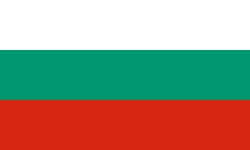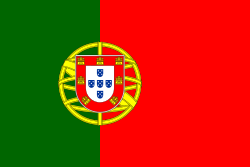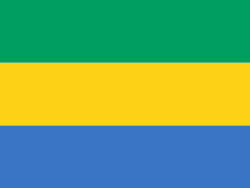FN:s generalförsamling
 General Assembly (engelska) Assemblée générale (franska) Asamblea General (spanska) Генера́льная Ассамбле́я Организации Объединенных Наций (ryska) 联合国大会 (kinesiska) الجمعية العامة للأمم المتحدة (arabiska) | |
 Generalförsamlingens sal i FN-byggnaden i New York. | |
| Organisationstyp | huvudorgan |
|---|---|
| Förkortningar | GA, 联大 |
| Ordförande | Volkan Bozkır (sept 2020 – sept 2021) |
| Status | aktiv |
| Bildad | 1945 |
| Webbplats | www.un.org/ga |
Generalförsamlingen (GA) är ett av Förenta nationernas sex huvudorgan. Dess uppgifter regleras av FN-stadgans kapitel 4. I generalförsamlingen ingår samtliga FN:s medlemsstater. Medlemsstaterna får ha högst 5 ombud i generalförsamlingen.
Placering
Sin ursprungliga lokalisering hade Generalförsamlingen 1945-50 i Flushing Meadows-Corona Park i Queens i den före detta världsutställningsbyggnad, som numera hyser Queens Museum of Art. 1950 flyttade församlingen till den nuvarande lokaliseringen vid FN-skrapan i New York. Platsen räknas som internationellt territorium.[1]
Generalförsamlingens sessioner
Generalförsamlingens sessioner är löpande under året, med början varje år under andra halvan av september.[2] Vid omröstningar har varje medlemsstat en röst, men i många frågor kan inte församlingen fatta några större avgörande beslut, bara ge rekommendationer och föra diskussioner i olika frågor som berör FN:s område. Den kan dock besluta om budget, enas om tolkning av och utveckla internationella lagar, och stadfästa program för ekonomisk, kulturell och social utveckling och för de mänskliga rättigheterna. Generalförsamlingen fungerar som ett viktigt debattforum för medlemsstaterna.
Ordförande
Generalförsamlingen leds av en ordförande, som väljs varje år, minst tre månader före den session för vilken denna ska vara ordförande.[2]
Under den 60:e sessionen år 2005 var Jan Eliasson, svensk diplomat och socialdemokratisk politiker, ordförande för FN:s generalförsamling.
| Lista över generalförsamlingens ordförande sedan 1946 |
|---|
|
Fasta utskott
Generalförsamlingen har sex fasta utskott:[3]
- Första utskottet – Nedrustning och internationell säkerhet
- Andra utskottet – Ekonomiska och finansiella frågor
- Tredje utskottet – Sociala, humanitära och kulturella frågor
- Fjärde utskottet – Specialpolitiska frågor och avkolonisering
- Femte utskottet – Administrativa och budgetära frågor
- Sjätte utskottet – Rättsliga frågor
Till dessa fasta utskott får varje land representeras av en person och därutöver ha med rådgivare, tekniska rådgivare, experter eller liknande.[4]
Referenser
- ^ ”Fact Sheet: History of United Nations Headquarters”. UN Visitors Centre. http://www.un.org/wcm/webdav/site/visitors/shared/documents/pdfs/FS_UN%20Headquarters_History_English_Feb%202013.pdf. Läst 12 november 2015.
- ^ [a b] ”Rules of procedure and comments”. FN:s generalförsamling. http://www.un.org/en/ga/about/ropga/. Läst 13 november 2015.
- ^ ”FN-familjen: vem gör vad? – Generalförsamlingen”. Förenta nationernas regionala informationskontor för Västeuropa. Arkiverad från originalet den 2 juli 2011. https://web.archive.org/web/20110702004659/http://unric.org/sv/information-on-fn/22?start=1. Läst 13 november 2015.
- ^ ”Main committees”. FN:s generalförsamling. http://www.un.org/en/ga/maincommittees/index.shtml. Läst 13 november 2015.
Externa länkar
- Officiell webbplats (arabiska) (kinesiska) (engelska) (franska) (ryska) (spanska)
| |||||||||||||||||
Media som används på denna webbplats
The civil ensign and flag of Belgium. It is identical to Image:Flag of Belgium.svg except that it has a 2:3 ratio, instead of 13:15.
The Canadian Red Ensign used between 1921 and 1957.
This image has compared for accuracy (mainly colors) using an image from World Statesmen. The only change is making the maple leaves green from red. This image has compared for accuracy (mainly colors) using an image from World Statesmen. The most recent version of this image has changed the harp into one with a female figure; see [http://flagspot.net/flags/ca-1921.html FOTW
Det är enkelt att lägga till en ram runt den här bilden
The national flag of Kingdom of Thailand; there are total of 3 colours:
- Red represents the blood spilt to protect Thailand’s independence and often more simply described as representing the nation.
- White represents the religion of Buddhism, the predominant religion of the nation
- Blue represents the monarchy of the nation, which is recognised as the centre of Thai hearts.
Författare/Upphovsman: Gutten på Hemsen, Licens: CC0
Flag of Norway with colors from the previous version on Commons. This file is used to discuss the colors of the Norwegian flag.
bendera Indonesia
Flag of the Socialist Federal Republic of Yugoslavia (1946-1992).
The design (blazon) is defined in Article 4 of the Constitution for the Republic of Yugoslavia (1946). [1]
Flag of the Socialist Federal Republic of Yugoslavia (1946-1992).
The design (blazon) is defined in Article 4 of the Constitution for the Republic of Yugoslavia (1946). [1]
Government Ensign of Hungary, flown by state-owned, non-military vessels from 1957 to 1990.
Flag of the Ivory Coast, written by Jon Harald Søby, modified by Zscout370. The colors match to what is reported at http://fotw.vexillum.com/flags/ci.html.
Flag of Portugal, created by Columbano Bordalo Pinheiro (1857–1929), officially adopted by Portuguese government in June 30th 1911 (in use since about November 1910). Color shades matching the RGB values officially reccomended here. (PMS values should be used for direct ink or textile; CMYK for 4-color offset printing on paper; this is an image for screen display, RGB should be used.)
Trinidad och Tobagos flagga
Flag of Tunisia until 1999.
Författare/Upphovsman: Patrick Gruban, cropped and downsampled by Pine, Licens: CC BY-SA 2.0
United Nations General Assembly hall in New York City.
Flag of Namibia
Flag of Romania, (21 August 1965 - 22 December 1989/officialy 27 December 1989).

Construction sheet of the Flag of Romania as depicted in Decree nr. 972 from 5 November 1968.
- l = 2/3 × L
- C = 1/3 × L
- S = 2/5 × l
State Flag of Iran, 1933-1964
The flag of Brazil from 1889 to 1960 with 21 stars.
Flag of Poland (with coat of arms, 1955-1980).
The flag of Afghanistan between 1931 and 1973 (1311–1352 A.P., 1351–1393 A.H.).
Logo of the United Nations, used in Wikisource
Flag of the Iraqi Republic, used officially in different forms from 1963-2008.
The Canadian Red Ensign used between 1921 and 1957.
This image has compared for accuracy (mainly colors) using an image from World Statesmen. The only change is making the maple leaves green from red. This image has compared for accuracy (mainly colors) using an image from World Statesmen. The most recent version of this image has changed the harp into one with a female figure; see [http://flagspot.net/flags/ca-1921.html FOTW














































































